Resources
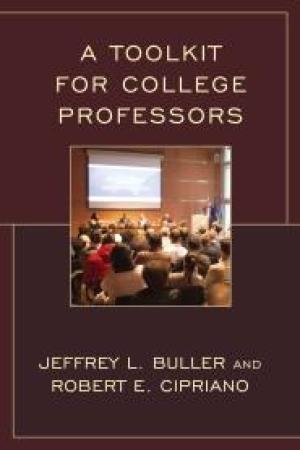
This book is pitched to college and university faculty at all career stages, and it stands out from other books in this category because of its research-based findings and its thoughtful case studies. The authors based their guidance on a year-long research study of 688 faculty from a wide range of institutions as well as on years of personal professional experience. The book covers the major aspects of an academic career: effective teaching and promoting student success, defining and facilitating collegiality and positive relationships within departments and with administration, conducting research, performing effective service to the institution or guild, and moving through the ranks to tenure and beyond. This book’s strengths include the liberal use of longer case studies and shorter scenarios, each of which works through a series of questions and proposed resolutions (for case studies) and a challenge question and outcome (for scenarios). The initial warm-up questions are often quite broad (for example, “Is there any general advice you think might be helpful to your friend?” [6]) while later questions tend to be more specific and thoughtful, requiring the reader to consider multiple factors and angles within one scenario. These vignettes were well written and thoughtfully prepared, and on the whole they engage the reader quite effectively. That the scenarios are so clearly taken from actual experience makes them more valuable, especially to newer faculty members who haven’t yet seen it all. Two chapters of this guide focus specifically on teaching. The first, titled “Teaching Effectively in the Classroom,” strongly promotes active learning over lecturing. The case studies in this section deal with common problems, such as how to respond to poor results in student evaluations and what to do when the entire class fails an exam. This chapter emphasizes the importance of learning how to teach large courses effectively, although the authors do include a section at the end of the chapter on “teachniques” for teaching smaller courses. Many new faculty and older faculty who are retooling will find this chapter a useful primer. The second chapter focuses on “Promoting Student Success and Engagement,” with a focus on developing friendly but not-too-familiar relationships with students. Using research and experience, the authors explain the pivotal importance of faculty in shaping students’ lives and ways of thinking well beyond the classroom. Taken together, these two chapters address many issues of interest to readers of this journal, and the remainder of the book is equally valuable for those looking for guidance and food for thought. As a guide designed for all faculty, this book necessarily elides issues of race and gender, for instance, that significantly shape faculty experience. That said, the book accomplishes much in a short space, and each chapter of the book is short and well-structured. Above all, this book uses the very techniques it suggests for effective teaching, and new faculty members in particular will find themselves better prepared for everyday faculty life after thinking through these realistic case studies.
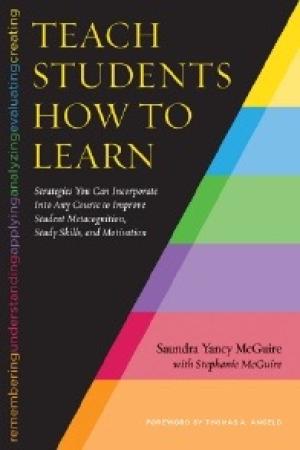
It shouldn’t be surprising that a volume intent on teaching students how to learn is just as intent on teaching the reader how to do just that, but it is still refreshing to read a book that lays out its goals, sticks to the promises it makes, and even creates its own study guide based on how much time the reader has to give to the text. Well-structured and clear, Saundra Yancy McGuire’s Teach Students How to Learn is as thoughtful about itself as it is about the content it presents. McGuire has composed this book to reflect her own response to and engagement with a pressing problem in higher education: namely, that many students, even those who qualify for admission at prestigious institutions, arrive without ever having been taught to learn by anything but rote memorization. Faced with college’s demands of skills higher in Bloom’s Taxonomy, they find themselves struggling and even failing. With this book McGuire gives teachers the tools they need to move their students past the high school model of retention until regurgitation, helping them instead to internalize a more nuanced, flexible understanding of learning. To convey this understanding, McGuire focuses on student mindset, encouraging educators to bring in everything from neurobiological models to fellow student success stories in order to help learners see that they are not stuck being “bad” at something – that change is not only possible, but already well within reach. One potentially significant drawback, depending on one’s perspective, is how the techniques are not out-of-the-box geared to address the concerns of humanities classes. Despite the fact that most of her experience comes from teaching chemistry – and how, relatedly, most of the examples in this book are from students of the sciences – McGuire insists that the techniques here are useful outside of STEM fields. While I have no difficulty believing that claim, it is clear that most of the methods in the book are geared toward content-focused disciplines. Fortunately, McGuire’s significant focus on critical and creative thinking on top of factual learning makes these strategies flexible and worth adapting. Most of all, McGuire is a fun writer. Personal and plainspoken, her style makes the pages fly by. (Any worries that this book might drown the reader in jargon should be alleviated by the appearance of the words “metacognition, schmetacognition” [17].) While perhaps not the most sophisticated text on the subject, Teaching Students How to Learn has hints and information appropriate to instructors at all levels of familiarity with metacognitive concepts, including none at all. I would recommend this book in particular to educators working with students from underserved communities, as giving students access to these techniques will help ensure their success far beyond the boundaries of a single classroom.
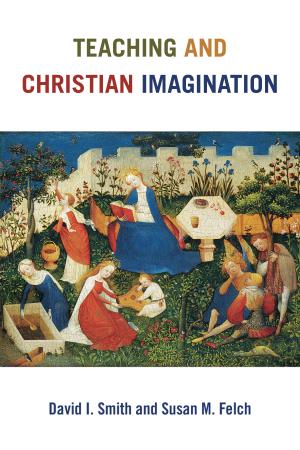
David I. Smith and Susan M. Felch remind their readers that they are offering “not a ‘how-to’ manual or collection of tips” but “lenses . . . opening possibilities” for effective “learning and teaching” (2). Teaching is not a transaction to dispense knowledge but a multivalent art that should not be reduced to gimmicks. As Smith and Felch conceive of it, teaching is a living process shaped by the imagination of both teacher and student – an experience directed by “visions, not just beliefs and techniques” (1). It is an organic life shaped by theological journeying, farming, and building metaphors. To bolster their argument, Smith and Felch carry their readers through a three-dimensional rubric that reimagines teaching as a biblical hermeneutic – a teaching life that undulates between “journeys and pilgrimages,” “gardens and wildernesses,” and “buildings and walls.” Reading this book as a teacher, I was drawn into the teaching world the authors invite all instructors to enter – it is a world where one hears, sees, thinks, and reimagines inexhaustible possibilities of shaping minds. The authors draw examples from biblical characters and Christian leaders to illustrate the multifaceted and meandrous journey each of their teaching metaphors conveys. First as pilgrim, the teacher is advised to rely on God, the divine GPS, for the journey (84) – an act that includes rest but does not preclude imagination on the part of the pilgrim. Second, insights and actionable ideas are not caught in vacuum. They are caught in surprising places like gardens, deserts, and classrooms where both teacher and students, like the first humans and liberated communities (Gen 1-3; Exod 1:1-15:27), learned to rethink, develop new perceptions, and take new steps as they journeyed with God. Third, edifices and walls speak about the role and construction of space. Though both building and walls may have a positive role as a course syllabus might (168), one is reminded that spaces delineated by the twin metaphor, buildings and walls, are often vigorously contested in the Bible, as is evidenced in the Household Codes (Eph 5:11-6:11; Col 3:18-4:1; 1 Peter 2:13-3:33) – a reality that did much to reduce many women to a subservient status and silence in the church to this day. As a Senegalese transnational biblical scholar shaped by African, Islamic, and Christian faith traditions, I find the journeying, farming, and building metaphors that Smith and Felch apply to teaching in not just Christian, but in every faith tradition. In spite of my reservations about limiting such powerful metaphors to only the Christian imagination, this book makes an invaluable contribution for educators. I agree with Smith and Felch, that Teaching and Christian Imagination is indeed an invitation to focus on what kind of person (and therefore what kind of teacher) we are gradually becoming and the place our vision of the world plays in the process . . . to wonder what teaching and learning might look like by those who know that they live in a world created by God who has filled it with beauty and story and song and who talks with us through the vale of tears and draws us toward future glory. (206) Put differently, Christian educators, and I would add all instructors of any discipline, are invited to take seriously their function as learners and teachers whose growth is inextricably bound to the growth of those they teach. In spite of my minor objection, this book should be in the library or office of any serious teacher, educator, or leader committed to the future of humanity.
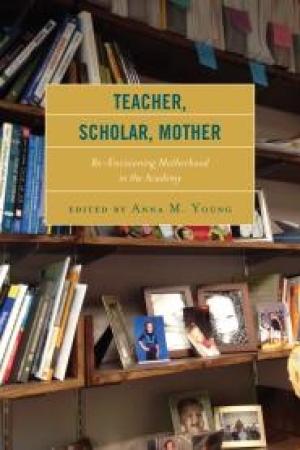
Teacher, Scholar, Mother accomplishes its stated goal – to re-envision motherhood in the Academy. The grim statistics facing women in the Academy who are (or wish to be) mothers are not mere numbers, but a lived reality for many, either personally or through the lives of colleagues. These facts mirror institutional, social, and cultural inequities that cause “the consistent talent leak in the professional pipeline” (Young, ix) which forces so many scholar-mothers to leave the Academy. While this grim reality may not be changing fast enough, the essays in this volume offer fresh and innovative perspectives that address these challenges with fortitude and vision; therefore, this book is a must-read for those in the field of higher education – administrators, male and female colleagues, teacher-scholar-mothers, and graduate students. The seven essays in “Section 1: Motherhood, Feminism, and Gendered Work” explore the “pipeline problem” through multiple theoretical and disciplinary approaches. Andrea Hunt argues that the normative ideologies reinforcing separate models of gendered work need to change to integrative models which can “help lay the groundwork for a new model of academic life and work-family balance” (10). Tracy Rundstrom Williams’ essay examines the confusing rhetoric and divisive language on breastfeeding which can undermine women’s confidence. “Mama’s Boy” poignantly discusses issues of masculinity, mothering, and white privilege through an interview conducted by feminist scholar Catherine MacGillivray with her son Merlin, a conversation that continues with an added interlocutor – Merlin’s step-father, Jason Fly – in “Mama’s Boy II” (section 3). Erin Tremblay Ponnou-Delaffon turns to Emmanuel Levinas’s philosophy on encountering the Other as a model to re-envision reading, writing, teaching, and parenting. Susan Iverson and Christin Seher’s qualitative study of mothers’ sabbatical experiences accounts for disciplinary distinctions between Humanities and STEM faculty and suggests that faculty professional development must consider needs of academic mothers in sabbatical planning. Brook Sattler, Jennifer Turns, and Cynthia Atman explore motherhood from an engineering design perspective as an opportunity for reflection and self-authorship. Dustin Harp’s essay critically analyzes how media consumption shapes our lives and understandings of gender and identity. The five essays in “Section 2: Identity and Performance in Academic Motherhood” document case studies of teacher-mother-scholars. Sara Childers’s essay queries the performative alignment between the objects and actions of motherhood and scholarship. Reflecting on her own subject position, M. Cristina Alcalde’s piece engages literature on non-violent masculinities to develop theories to create a safer world for today’s youth. Allison Antink-Meyer shows how the epistemology of science can be a bridge to connect the historical gap between the culture of academia and family-life. Erin Graybill Ellis and Jessica Smartt Gullion’s ground-breaking study examines how graduate student mothers negotiate the conflicting roles of “good mother” and “good graduate student.” The final contribution in this section, by Caroline Smith and Celeste Hanna, argues that Betty Draper of AMC’s television series, Mad Men, should be recognized as a cultural icon rather than the world’s worst mother. The essays in Section 3 give voice to topics frequently silenced in the Academy. Elisabeth Kraus poignantly shares her experiences to give new life to the narrative of stillbirth. Marissa McClure’s article “s/m/othering” addresses infertility and cultural constructions of motherhood through artistic practice and academia. Ama Oforiwaa Aduonum’s article, written in a mix of prose and verse, voices institutional and cultural biases that can support and also hinder mother-scholars in Ghana and the U.S. In “Dropped Stitches,” Martha Kalnin Diede weaves together stories of female monsters, challenges of motherhood in the Academy, and fighting cancer. Layne Parish Craig analyzes narratives on IVF and Assisted Reproduction Therapy (ART) that disrupt the heteronormative focus on infertility. The essays in the section are especially welcome as fresh approaches to underrepresented topics in the Academy. Read as a whole, these essays are greater than the sum of the parts despite the fact that the arrangement of the articles seems extemporaneous – for example, the addendum interview by MacGillivray in section 3, and Ama Oforiwaa Aduonum’s article on identity and performance which would have been more suited to section 2. This minor point aside, Teacher, Scholar, Mother is a refreshing must-read that intelligently re-envisions motherhood in the Academy.

I am starting a new job at Union Theological Seminary in New York city. It is a joy beyond measure for me. As we know well, when we start a new job, our new position comes with lots of expectations, insecurities, hopes, and power. It is incredible how an institution can make us feel more or less powerful. The moral and historical weight of some institutions have a deep impact on our psyche. In this time of adjustment, I am busy settling in and getting prepared for my first of everything: faculty and student meetings, all kinds of meetings, chapels, classes and so on. I am getting very anxious. Not a surprise, this anxiety found a place in my dreams. Last week I dreamt that it was time for Convocation (I am supposed to speak at convocation this year) and I was running late. I walked to the chancel where the faculty was seated and I had no robe and was walking barefoot. You now have all you need to go anywhere you want in interpreting my dreams. Email me if you want to give me tips. However, the fundamental interpretation of my dream is mine. Contradictory to its pieces, a vague possibility of meaning can be: walking late is my anxiety with being here and not follow things properly; walking barefoot might be that I am relaxed and able to be myself; and walking without my Doctoral robe can be the eternal impostor syndrome that affects so many minority teachers, I am not sure what people might think of me and one day they will discover me, since I am an impostor. In any case, the sharing of my dreams is to say that my full being is entrenched in the very craft of teaching. Our inner life is never detached from our outer life. We feel and think together, our bodies are part of a much larger scheme of things, we get sick when workplaces are dysfunctional. Thus, my class is just a fold within many folds of correlation in the lives of my students, the school, and this country/world. Our classrooms have deep implications associated with the social, racial, sexual, religious, cultural, economic conditions of our students. No text is a text that stands on itself. Every reading is a dialogue, some better than others of course, with worlds opening and/or closing, colliding in many ways, and in all of the teaching/learning exchange life is figured, disfigured, and refigured. Extending the many folds of our classrooms, our schools are enmeshed in specific economic models, models that are changing our craft in so many ways. The neoliberal system that presses any institution into turning a profit, moving education and health systems into forms of gaining money, is transforming practices and conversations about education. Schools are becoming pawns of the market and its educational strategies are more often in the hands of economists or market specialists than educators. Without money, we can’t do anything. While it seems and feels that this is fundamentally right, the results in my view are desolating. For the students: students receive a narrow education; mostly to perform specific functions in the market; students become customers and teachers become the student’s employees. For the professors: faculty receives cumulative work for administration with the same or larger teaching loads, the disappearance of tenure -- especially when minorities are raised to tenured positions, increasing adjunct positions, a loss of worker’s rights, smaller salaries, and reduced benefits. All of this suggests how expansive a classroom can be and how anxious it can become. Nonetheless, when we check the borders of our classrooms, we realize that no pedagogy is neutral, or objective. Neutrality is often a form of pretending we are not supporting a political, economic system. Objectivity has been, in the words of Adrienne Rich “little more than male subjectivity.” In some ways, very small ways, the borders of our classrooms, both the content and the frame, can help shift worldviews, forms of living and help create new worlds. Critical pedagogies engage students to criticize the inequality of our class system, undo many forms of coloniality, contraband knowledges, create common spaces of differences, debunk ideas, demise economic systems, break down blind consensus, shift some circles of feelings that serve capitalism, challenge political views, confront ignorance and break chains of oppression. If our classes, whatever classes we teach, do not aim at undoing injustices, confronting capitalism/globalization/imperialism and serve the poor, it will tend to maintain conformity and complacency with the powers that be, sustaining class structure and inequality. Capitalism is eating us alive! We cannot let it go without criticism and action. We need teachers who know what their classrooms and pedagogies can do! Peter McLaren says the following: This is because naming let alone questioning the social, political, cultural, and economic arrangements under capitalism constitutes a form of political intervention and activism that for many educators is simply too risky. Instead, many engage in a form of “soft-radicalism” that scantly scratches the surface of the mechanisms of the dominant ideology. Here, protests reverberate like distant eructations from the bar stools of the local pub. Other colleagues may hide their class and race privileges in an obscure political and ideological discourse and language that leaves little room for actually addressing the material needs of those in our society who permanently live on the margins and the periphery.[1] Educators have to be aware of the many borders that clearly mark their classrooms. In this very short post, I just want to remind us how, from dreams to social class exploitation, from syllabi to gender troubles and sexual fluidities, from course evaluations to race and class struggles, from advising to students' loans and debts, from class discussions to being under neoliberal economic systems, everything is part of our daily craft. Either we see and talk about it, or not. For me, we have a moral responsibility to address it. [1] McLaren, Peter; McLaren, Peter; Farahmandpur, Ramin (2004-11-23). Teaching against Global Capitalism and the New Imperialism: A Critical Pedagogy (p. 7). Rowman & Littlefield Publishers. Kindle Edition.
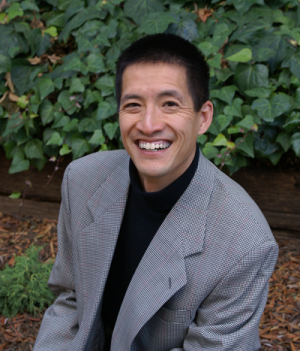
It was by now a pretty well-known social experiment. A man dressed like a homeless person collapses on the street and is ignored by pedestrians; when the same person puts on a business suit and collapses on the same street, however, a number of strangers quickly come to his aid. Unfortunately, appearance does matter, and it matters also in the classroom. Let me turn now to share my own experiences with two students in my very first course that I taught as a full-time professor. Student One It was literally my first day of class in the seminary. I was both anxious and excited. After giving out and going through the syllabus, I followed my lesson plan on which I had worked tirelessly all summer long. When time was up, I was secretly congratulating myself for making what I thought to be a wonderful first impression, especially when a couple of students came up to me and said that they were really “psyched” for the course. Then a white woman student who looked to me to be in her fifties introduced herself to me with not only her name but also her credentials. She said that she had a doctorate in adult education and that she could tell that I had little knowledge or experience with adult education (of course, I had told everyone at the beginning of the class that this was my very first year teaching at the seminary). She followed up and commented that my syllabus was too long and too intimidating and that I talked too fast, gave too much material, and failed to provide students any handouts. I was floored and a little embarrassed, but I managed to keep myself calm and said something to the effect that I would try to provide some handouts and that I would always be available for conversations if she had any questions about the course. Unfortunately, my “invitation” resulted in one after-class encounter that has remained vivid in my memory even almost twenty years later. I had just returned a written assignment to the class, and this woman came up after class again and asked me why she got a particular grade. (It was not a bad grade, as I remember that it was in the B range.) Since I always provide ample comments on student papers, I pointed those out and explained that her paper could be better and more tightly organized. To my surprise, she responded by saying that my “problem” had to do with the fact that English was not my first language and that I did not understand that there was a kind of writing “in the West” known as stream-of-consciousness. Would she feel the same liberty to approach a white male professor and say something like this if she got a B-range grade from him? I think not. Student Two It was time to look at my very first set of course evaluations as a full-time professor. This time, I was more anxious than excited. One particular student comment stood out among the—thankfully—many affirmative and encouraging evaluations that I had received. This student basically said he or she had gotten to the classroom feeling very tired from a long day of work as well as feeling rather frustrated as this was his or her first day in seminary. Sitting at the back of the classroom, this student said he or she felt even worse when I walked into the classroom and stood behind the lectern as the instructor for the course. I could not repeat it verbatim but it went something like this: “I could tell it was going to be a disaster as soon as I saw him, but then Professor Liew started to speak and I was immediately energized and engaged.” I am grateful and glad that, based upon a very positive evaluation, this particular student was able to learn from me and with me, but what this student assumed upon just seeing me is most telling. Why would he or she make the foregone conclusion that the course was going to be bad as soon as I showed up? Yes, there is another “appearance” that one cannot change as easily as putting on or taking off a piece of garment. These two students taught me early on in my teaching career that students carry all kinds of assumptions, racialized or otherwise, with them into the classroom, and so I have to be prepared for them. Of course, we as teachers are not immune to this: we have assumptions that lead us to think, act, speak, and make evaluations in particular ways with particular persons. If teaching is truly one of the best ways to learn, I want and need to learn from these early experiences in my teaching career how students may also need to prepare for class in ways that go way beyond what are listed on their syllabi. Allow me to share the following video by some students at the Rhode Island School of Design as we all work to plan and prepare for the beginning of a new academic year (note that the video contains strong language that some may find offensive). The video raises a host of issues and questions to consider. What questions arose for you as you think about your own teaching? What might it mean for students and teachers to “veil” themselves in classroom contexts? Social DNA comes with the bodies that enter our classrooms, but it can also be addressed and even changed by what we do in our classes.
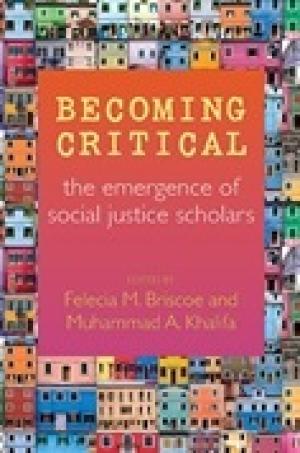
This book presents readers with eleven compelling autoethnographies that combine critical theory and scholars’ lived experiences. Each contributor deserves its own recognition for the courageous act of opening up private spaces for public discussion, utilizing their own experiences as data. Described as a “nontraditional way of knowing,” autoethnography, as a form, “challenges the criticism of traditional positivist epistemologies regarding ‘objectivity, absolute truth, and ‘validity’’” (13, 7). The text’s editors, Felicia M. Briscoe and Muhammad A. Khalifa, remark that they choose critical autoethnography as a genre because it “allows us to represent knowledge outside a traditional European framework” (13). Western academe is itself a culture – one historically dictated by White middle-class male norms. Autoenthographies produced by those belonging to marginalized and often silenced groups counter and disrupt narratives of the dominant academic discourse. Each of these scholars tells their own story and documents their experience of ‘becoming critical’ when they recognized the oppressive power of relationships at work in their worlds, reacted to them, and in the end, endeavored to steer society towards “greater social, political, and economic equity” each in their own way (10). These autoethnographies are, in short, counter-narratives for social justice within higher education. Drawing from such disparate sources as Comedy Central’s Chapelle’s Show to renowned theorists such as Patricia Hill Collins, Paulo Freire, and Pierre Bourdieu, these texts pull from a diverse range of mediums. While the experiences are varied and multifaceted, much of the theory drawn upon overlaps. Many of the authors use a Foucauldian understanding of the power/knowledge relationship (splendidly illustrated in Briscoe’s chapter) which suggests that power is not totally in the hands of one person. As Briscoe states, “people cannot be neatly divided into oppressors and the oppressed... we are oppressors in other ways” (120-121). Other common theories pervade the series, such as CRT (Critical Race Theory) which highlights the endemic nature of racism in American society. Many of the authors give a cursory nod to Judith Bulter’s concept of one’s identity as performative. However, Miguel De Oliver’s “We’re All Half-Breeds Now…in a Not so Ivory Tower” describes how, for the “racially ambiguous,” the space that one occupies becomes the “key to presumptions of identity” (228). In his experience, he need only occupy a particular space to be ascribed a specific identity (foreigner, Latino, “White,” Navajo, “Black athlete,” and so forth) (225-241). Whether the chapter is about a Gusii woman (Damaris Moraa Choti) living in a world of male domination, experiencing cultural pressures (from primarily women relatives) to undergo clitoridectomy, who finds solace in her family’s Christian faith and love of education or a Black, male, Muslim’s (Muhammad A. Khalifa’s) encounter of being automatically singled out in class to respond to a Boyz N the Hood trailer because in the “White imaginative” Black males are expected to identify with the gangster nature, readers will be challenged by the worlds presented and drawn into the experiences described. Sadly, there are no easy answers and speaking out against institutional injustices often has very real material consequences (as noted in the chapter “Too Black, Yet Not Black Enough: Challenging White Supremacy in U.S. Teacher Education and the Making of Two Radical Social Misfits” by Brenda G. Juarez and Cleveland Hayes). The case studies are divvied up by the contributor’s experience based on race and gender but perhaps the most instructive section focuses on the case studies documenting scholars’ intersecting dimensions of identity (race, gender, ethnicity, class, religious, and so forth). The autoethnographies in this section track how the authors embody multiple (sometimes conflicting) identities, occupy a myriad of roles, and negotiate their personal and professional identities amid the confines of higher education. In the chapter, “Working the Hyphens: Ethnographic Snapshots in Becoming Critical-Female-Black-Scholars,” El-Amin, Henry, and Laura fight the notion that there is “no room for real PhDs to take seriously scholarship that is politically, historically, and personally rooted in multiple identities” (208). These scholars’ stories – in fact, their very existence – explode the myth of the monolithic scholarly experience. As the American university becomes exponentially diverse, college professors and administrators will need to be well-versed in critical theory as well as actively engaged in dialogues on difference. This book exposes the reader to both. Readers need not be educational professionals or “theory heads” to benefit from the stories presented here; anyone invested in social justice and educational equity will be rewarded by hearing these voices.
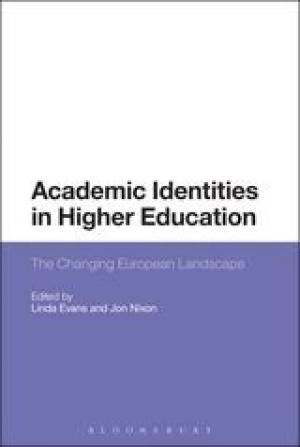
Academic identity, like all identity, is fluid. This volume places questions about academic identity in the equally fluid context of “Europe,” which is here defined as at once united and fragmented, particularly after the economic crises of 2008. This volume pulls together thirteen articles in three sections: Frameworks and Perspectives, Academic Trajectories, and Formations and Re-formations. The authors are not sociologists of life course or scholars who study academic identity; they are, more usefully for this volume, speaking from their own contexts and experiences in European higher education from the late twentieth into the early twenty-first centuries. The editors have done a fine job choosing and grouping these essays, many of which were written by authors in their second or third languages to comply with market demands for English publication. This is one of the many strengths of the book, as it illustrates the kinds of demands that are placed on European academics that are absent in many ways from American contexts. Nevertheless, much is familiar here: academics in neoliberal systems of mass higher education struggle with ever-increasing bureaucracy, top-down management, and the encroachment of academic “professionalism.” Pressure to be represented well in world rankings tends to encourage institutional systems of assessment and auditing of outcomes that shape the academic enterprise as an inward-looking, self-serving part of a labor-driven economy and individual academics as cogs in the machine. As Jon Nixon states in his introduction, treating academic work like labor, as a matter of “pre-specified outcomes and destinations,” produces an unfortunate mismatch: “Academic identity is – to come full circle – a process that is uncertain in direction and indeterminate in outcome” (13). To treat academic work as labor is to misunderstand the potential benefits of outward-looking institutions that value intellectual autonomy and innovation above target-setting and performance measures. Many of the chapters in this volume could stand alone as case studies; each presents its own particular balance of interrogating biographical, institutional, or broader contextual identities and each brings a coherent and defined voice to the shared project. It is impossible to capture the richness of each of these chapters here, and each somehow manages to consider an individual life within the vast institutional, sociocultural, historical, and political contexts in which that life is lived. Although there is nothing specific to either religious studies or theology in this volume, there is much here that will resonate with academics who struggle with being pulled away from research and teaching to comply with institutional mandates. This volume should help academics in all disciplines to reflect on the power of context and particularly institutional context to shape lives and careers. Implicit here is a call to embrace the best in higher education despite the “regulations, financial incentives, rewards, quality standards, as well as academic, public, and professional values” (6) that constrain and give shape to our identities. These essays hint that a mix of resilience and subversion might well be the academic’s best allies.
This is the new side bar for Web Site On Religion, this page is named (custom-sidebar-website_on_religion)
This is the new side bar for Syllabi, this page is named (custom-sidebar-syllabi)
Wabash Center Staff Contact
Sarah Farmer, Ph.D
Associate Director
Wabash Center
farmers@wabash.edu